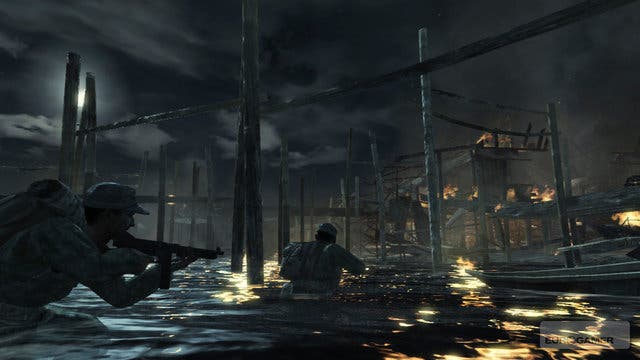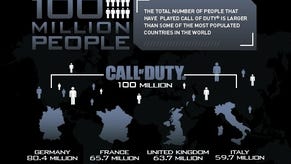Call of Duty: World at War
Don't look back in anger.
Call of Duty: World at War executive producer Daniel Suarez already knows what's on our minds, and he's come armed. "The first question I get asked, is why go back to World War II?" Well, quite. I ask myself a similar question sometimes, since I'm the one who always ends up reviewing WWII shooters. Treyarch's answer is probably the same: old habits die hard.
"We didn't want to go back and make the same old World War II game. [Treyarch] has done it before. [World at War] is their fourth Call of Duty game. They've been developing Call of Duty games for longer than World War II was actually fought." That's either depressing or heroic. Either way, some sort of medal is due. Presumably not of honour. Or, indeed, honor.
"So they didn't want to go back and make another game that you've all played before. They felt very much like you guys do. It's long in the tooth. It's stale." I could take umbrage! "So that was the big challenge: how do they redefine what everyone expects from a World War II game?" War game design 101? Make it gory. Following Modern Warfare's lead into Mature-rated territory, Treyarch is pitching World at War as a "more brutal and more intense Call of Duty than you've seen before". It's not a Soldier of Fortune gib-fest, but "employs a lot of different things from violence to subject matter presented in a way that hasn't been done to date".
The other thing to freshen things up, of course, is to pull the old Medal of Honor trick and turn the attention towards the Pacific theatre - except do it properly, obviously. Still mentally scarred by the horrors perpetrated by the horrendously bad Rising Sun, Suarez and company have a lot to do to make us forget. Undaunted, he reckons "it's a great location" with "a whole new sort of dynamic" involving dense jungle warfare in both night and day conditions.
To illustrate the point, the assembled press are walked through a co-op demonstration of an early mission called 'Hard Landing'. Kicking off in an atmospheric swamp-like setting, we follow a squadron of US marines creeping through a lazy jungle stream for clues on the whereabouts of a recently-crashed aircraft. Flanked by colossal trees with eerily exposed roots, dappled sunlight filters through the dense canopy onto typically detailed uniforms and the team within them quickly discovers a portion of the fractured, still-smoking fuselage on the water's edge.

Within seconds, the tranquil jungle ambience switches from the hypnotic rhythmic thrum of a thousand busy crickets to the angry rattle of machinegun fire as a camouflaged ambush of gun-toting Japanese soldiers rises from the wreckage. "They're a spooky kind of enemy," Suarez reckons, "like Predator". Except presumably without the arm blades, cloaking ability and terrifying triangular lock-on designator. "They're really not afraid to die."
We're promised a set of enemies which, unlike German soldiers who might meekly surrender once they know the game is up, will fight for their emperor until death. Such claims are hard to verify at first glance, but it's something to keep in mind for when we get our hands on the finished article nearer its release in November.
And as well as the promise of a more aggressive, unpredictable enemy, we're told to expect a different selection of weapons and vehicles. Flagged up as particularly interesting are flame-based weapons like the good old flamethrower, as well as molotov cocktails and even flame tanks. The 'spread effect' of the use of fire in-game is also bigged up, with nearby foliage and scenery items charred or set alight, and the delightful prospect of seared flesh to boot. Well, they said it was gory.




